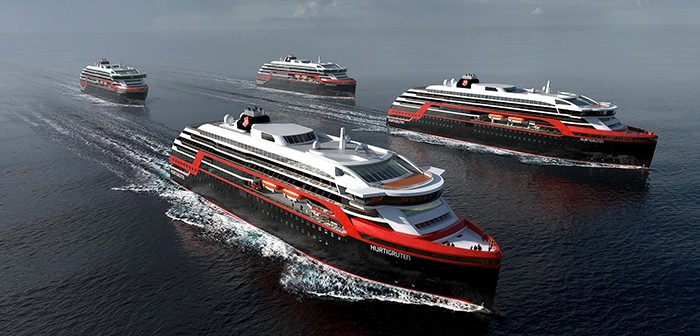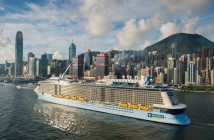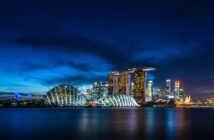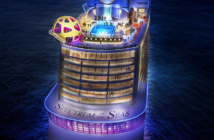The same technologies which are transforming the passenger car are now being applied to the cruise ship industry, which is rapidly embracing low-emission ships powered by LNG and electric batteries.
Both new power systems will radically reduce the carbon footprint of large passenger ships and end the reliance of major operators on unpleasant heavy fuel oil.
Carnival Corp, the world’s largest cruise operator, has signed a memorandum of agreement with German and Finnish shipbuilders Meyer Werft and Meyer Turku for three cruise ships powered by liquefied natural gas (LNG).
A number of other major companies, including P&O Cruises UK, Costa Cruises and AIDA Cruises, have also ordered LNG-powered ships from the same shipyards. The new P&O ship is due for delivery in 2020.
In other developments, Hurtigruten has ordered a pair of new 20,000-ton hybrid powered cruise ships utilizing a battery system. The two ships, the first of their type in the world, are capable of carrying 600 passengers and are due for delivery in 2018 and 2019.
“The future of shipping is, without a doubt, silent and emission free,” said CEO of Hurtigruten, Daniel Skjelda. “We will use our new expeditionary ships as ground breakers for this new technology and show the world that hybrid propulsion on large ships is possible.”
According to the company the hybrid technology, in combination with the construction of the hull and effective use of electricity onboard, will reduce the fuel consumption and CO2-emissions by 20 per cent.
The hybrid solution was developed by Rolls Royce. In addition, Bellona, a non-profit organization working to fight climate challenges, has been involved with the project.
“Battery-powered propulsion in ships this size shows that batteries are onboard to stay,” said Fredric Hauge, president of Bellona.
“This represents a huge reduction in emissions from shipping.”
The hybrid ships will be built in two phases. The first ship will be equipped with an auxiliary electric engine, which will reduce the CO2 emissions by 20 per cent. The second ship will be built with a fully-fledged hybrid engine that can power the entire ship for longer periods of time.




